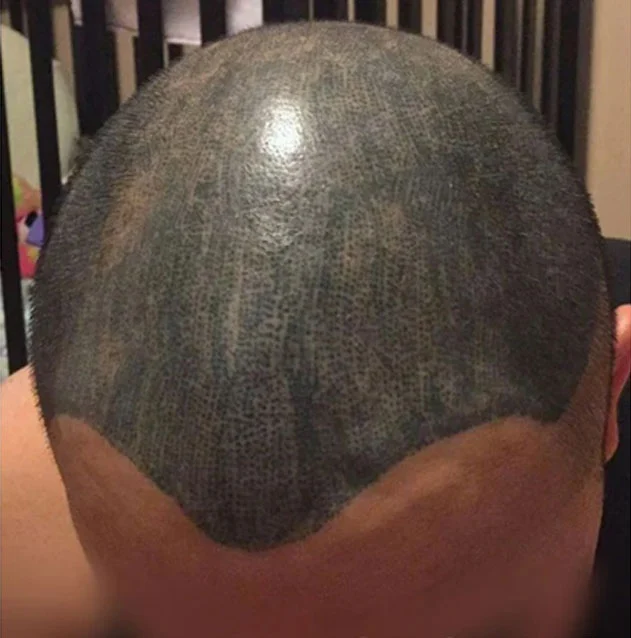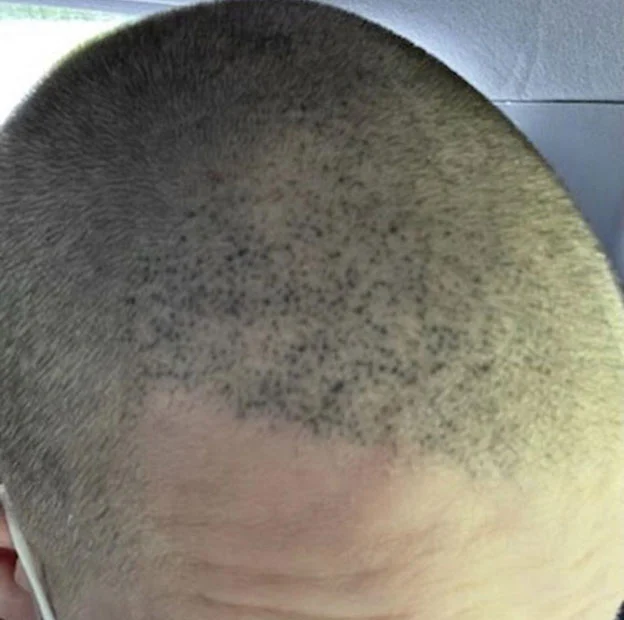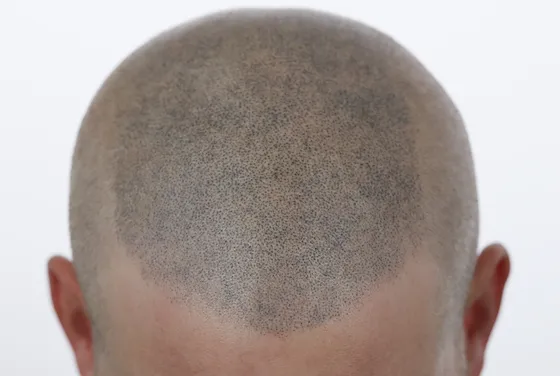Avoiding Botched Scalp Micropigmentation: Why It Happens and How to Choose the Right Professional
Scalp micropigmentation (SMP) has become a popular solution for those dealing with hair loss, offering a realistic and effective way to create the appearance of a fuller head of hair. However, with the rising demand for SMP, there has also been an increase in botched jobs—poorly done procedures that can lead to unnatural, uneven, or even damaging results. So why do so many SMP treatments go wrong, and what steps can you take to ensure you find a professional who will deliver the look you want?
In this post, we’ll break down the main reasons why botched SMP jobs occur and offer tips on how to avoid these issues by choosing a skilled and reputable practitioner.
1. Lack of Proper Training and Certification
One of the leading causes of botched SMP procedures is a lack of proper training and certification. SMP is a specialized art form that requires a blend of technical skill, artistic ability, and in-depth knowledge of skin types and pigments. Unfortunately, with SMP’s popularity on the rise, many individuals are entering the field without adequate training or certification from reputable institutions.
How to Avoid It: Look for a practitioner who has received formal SMP training and certification from a recognized institution. Reputable SMP professionals often display their certifications in their studios or on their websites. Ensure that your practitioner has received instruction in scalp micropigmentation specifically, not just general tattooing or permanent makeup.
Learn more about our training program.

2. Using the Wrong Pigments or Equipment
SMP is very different from traditional tattooing, yet some practitioners mistakenly use regular tattoo pigments and equipment. Tattoo ink is formulated to penetrate deeper layers of skin and is intended to be bold and vibrant. When used on the scalp, it can result in unnatural shades, discoloration over time, and an uneven look. SMP-specific pigments, on the other hand, are designed to mimic the natural look of hair follicles and are intended for use in the shallower layers of the scalp.
How to Avoid It: Ask your practitioner about the pigments and equipment they use. Reputable SMP artists use specialized pigments that won’t discolor over time and microneedles designed for precise application on the scalp. An experienced professional should have no problem explaining their choice of products and tools and why they’re appropriate for SMP.
3. Poor Technique and Inexperience
A significant factor in botched SMP jobs is poor technique, often due to a lack of experience or skill. Inexperienced practitioners may struggle with achieving consistent density, symmetry, and natural shading, leading to patchy or overly dense areas that look unnatural. Mistakes in technique can also create uneven hairlines or overly dark dots that resemble ink spots instead of hair follicles.
How to Avoid It: Look for an SMP artist with a solid portfolio of their previous work, particularly in cases that resemble your hair loss pattern and desired outcome. High-quality SMP work should appear natural and well-blended, with an even distribution of pigments. If the artist’s portfolio includes hairlines that appear overly harsh or dense spots that don’t look realistic, it may be a red flag.
4. Inadequate Understanding of Client Needs and Hairlines
An SMP procedure should be highly personalized to suit each client’s facial structure, hair type, and desired look. Unfortunately, some practitioners use a “one-size-fits-all” approach, creating unnatural or exaggerated hairlines that don’t match the client’s features. A hairline that looks good on one client may not suit another’s face shape, which can lead to unsatisfactory or even embarrassing results.
How to Avoid It: During your consultation, the practitioner should take the time to discuss your goals and analyze your face shape and existing hair pattern. They should be able to customize the hairline shape, density, and style to suit your appearance. If you feel rushed through the consultation or if the practitioner doesn’t discuss customization options, consider looking for a different SMP artist.
5. Neglecting Aftercare Guidance
Proper aftercare is essential for achieving and maintaining good SMP results. Without the correct aftercare, pigments may not settle evenly, leading to blotchy or faded areas. However, some practitioners fail to provide clients with detailed aftercare instructions, resulting in poor healing and, ultimately, poor results.
How to Avoid It: Choose a practitioner who prioritizes aftercare and provides detailed, written aftercare instructions. They should explain how to care for your scalp post-procedure, including avoiding sun exposure, keeping the area clean, and applying any recommended products. If a practitioner doesn’t mention aftercare at all, it’s a clear warning sign that they may not be thorough or attentive to their clients’ needs.

6. Lack of Transparency and Poor Communication
Poor communication and lack of transparency can lead to misunderstandings and unmet expectations. A reputable SMP professional should communicate openly about the process, the expected results, and any limitations of the procedure. Some clients end up with botched results simply because they were misled about what SMP could realistically achieve.
How to Avoid It: Look for an SMP artist who communicates clearly and openly about the procedure, expected outcomes, and any limitations. They should be willing to answer any questions you have and set realistic expectations for your results. A trustworthy practitioner will be honest about the number of sessions needed, the type of results you can expect, and any risks involved in the procedure.
Tips for Choosing the Right SMP Professional
To avoid a botched SMP job, consider the following tips when selecting your practitioner:
- Check Reviews and Testimonials: Look for online reviews or testimonials to see what past clients say about their experience. Positive reviews about natural results and satisfaction with the overall process are strong indicators of a reputable professional.
- Ask for Before-and-After Photos: A reputable SMP artist will have a robust portfolio of before-and-after photos. This allows you to assess their ability to deliver consistent, natural-looking results.
- Request a Detailed Consultation: A thorough consultation is essential to understand the process and set expectations. Use this time to ask questions about their training, pigments, equipment, and aftercare.
- Choose Someone With SMP Specialization: SMP is a unique skill. Choose a professional who specializes in scalp micropigmentation rather than general tattooing or other cosmetic treatments.
Conclusion: Investing in Quality for Long-Lasting Results
Scalp micropigmentation is a powerful tool for restoring confidence and creating the appearance of a full head of hair. However, as with any cosmetic procedure, results depend on the expertise of the professional performing it. Avoiding a botched SMP job comes down to choosing someone with the right training, equipment, and approach to client care.
If you’re considering SMP, take the time to do your research, ask questions, and find an experienced, certified SMP professional who will prioritize your goals and satisfaction. When done correctly, SMP can transform your look and boost your confidence—so it’s worth investing in quality from the start.

